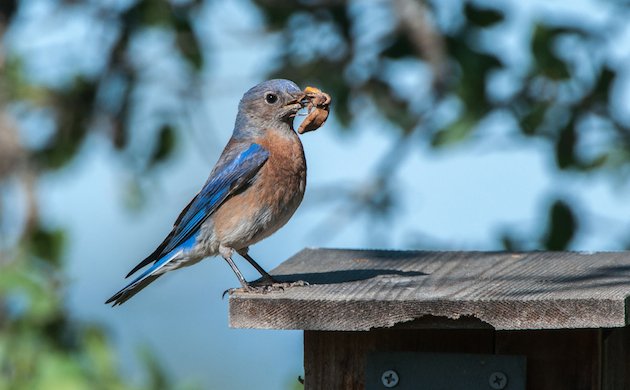
From the 1913 USDA Farmers Bulletin #513, Fifty Common Birds of Farm and Orchard: “The bluebird is one of the most familiar tenants of the farm and dooryard. Its favorite nesting sites are crannies in the farm buildings or boxes made for its use or natural cavities in old apple trees. For rent the bird pays amply by destroying insects, and takes no toll from the farms crop. The largest items of insect food are grasshoppers first and beetles next, while caterpillars stand third. The vegetable food consists chiefly of fruit pulp, only an insignificant portion are from cultivated varieties.”
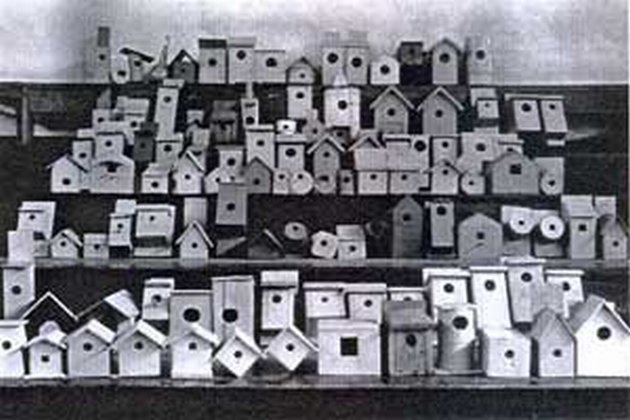
Nest Boxes (Bird Houses) from 1912
It was in 1926 that Thomas E. Musselman of Quincy Illinois is generally credited with originating the bluebird conservation movement that extended beyond local boundaries. He also came up with the concept of a “bluebird trail.” He designed his own boxes with removable tops, and started putting them up along country roads, eventually expanding to 1,000 boxes1. Click on photos for full sized images.
Western Bluebirds (Sialia mexicana) like the male shown above, as well as Eastern Bluebirds (Sialis sialis) and Mountain Bluebirds (Sialis currucoides) have all benefited from 90 years of nest boxes and bluebird trails, monitored by thousands of bluebird enthusiasts across North America.
Every spring I look forward to monitoring my bluebird trails when I not only get to watch Western Bluebirds develop from eggs to fledglings, but other cavity nesters as well. During the 30 minutes or so I spent checking on this nest box, where the nestlings are just days from fledging, we were visited by a (non-cavity nesting) Chipping Sparrow (Spizella passerina)…
and the first occupants on my bluebird trails, the Oak Titmouse (Baeolophus inornatus).
What the Oak Titmouse lacks in splendor, it makes up in personality!
This day I watched as both the male…
and female adults, brought a variety of insects to the youngsters…
and kept the nest fairly clean by carrying away the fecal sacs excreted by the nestlings.
A couple of years ago I was lucky enough to record the Western Bluebird nestlings fledge from the nest box. This film is condensed from about a three hour fledging experience of Western Bluebirds being coaxed from their nest box. Both parents are seen feeding the nestlings, but in between the feedings they perch nearby, sometimes with food and sometimes not, and try to coax the nestlings to leave the safety of the only home they know.
You will hear the parents call to the nestlings and see the nestlings chirping back. You will also hear many other bird species in the background including Ash-throated Flycatcher, California Quail, Eurasian Collared-Dove and Acorn Woodpecker. There were also Violet-green Swallows checking out the nest cavity before the first nestling ever fledged.
Once it leaves the nest, you will see the young bluebird perching for the first time in a nearby oak tree, the second nestling soon to follow. I watched three of the five nestlings fledge but had to leave before the last two left the nest box.
httpv://youtu.be/qxsnESZ2Z6U
References: 1Eastern Bluebird History


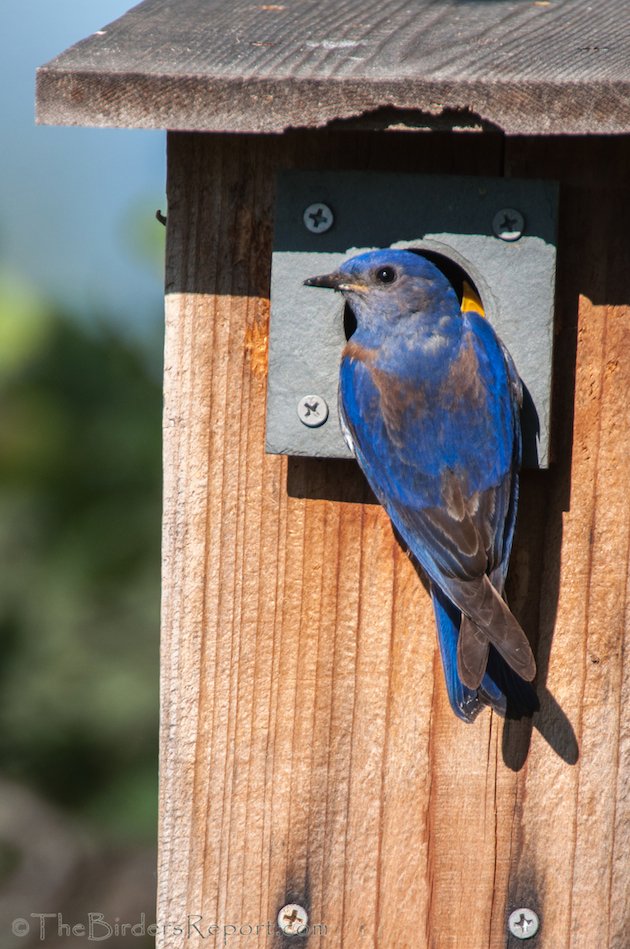
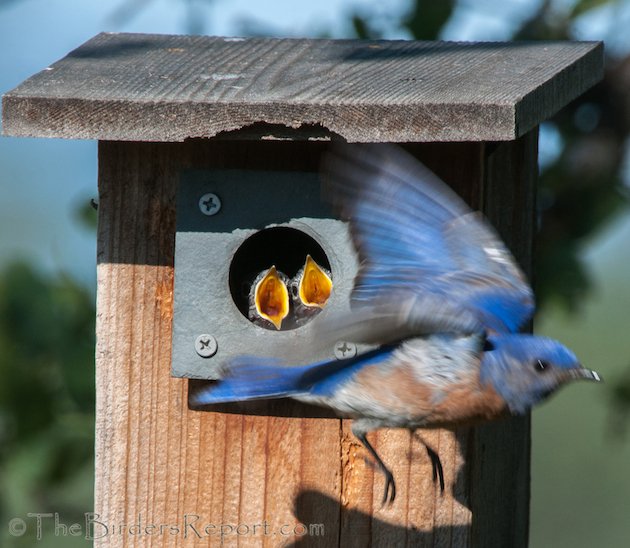
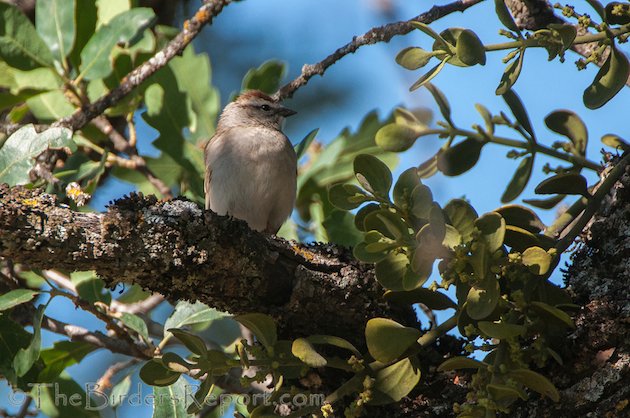
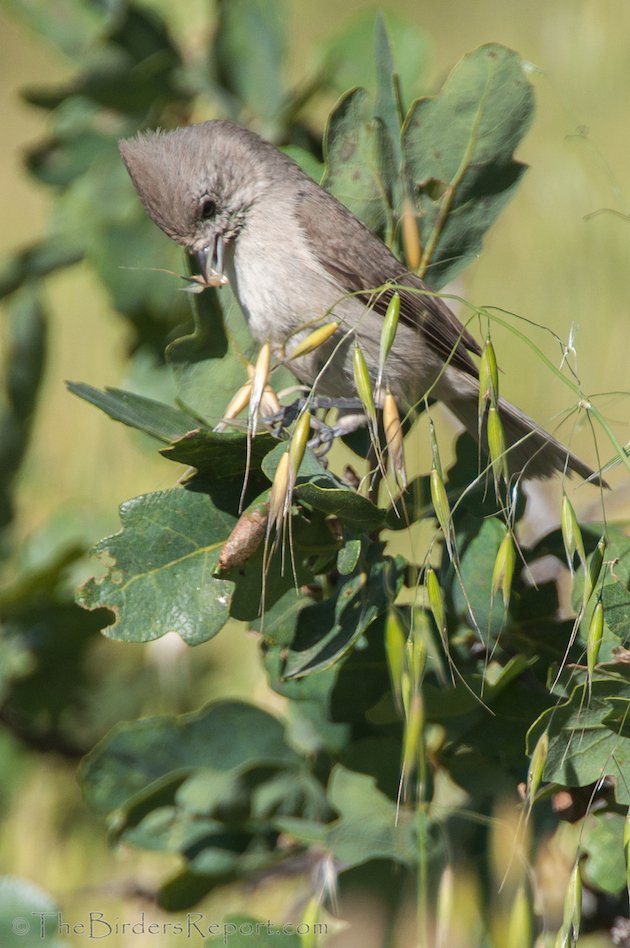
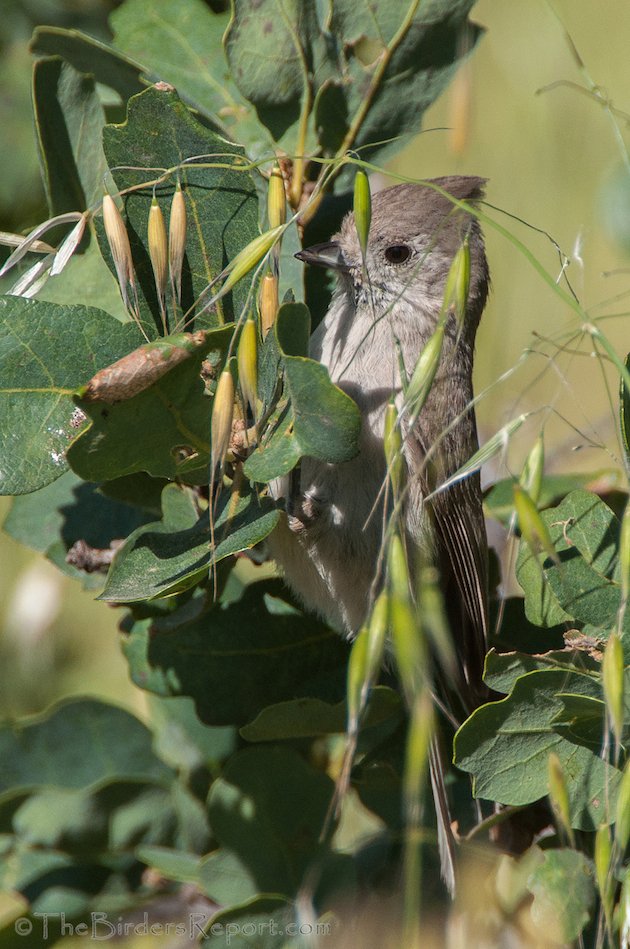
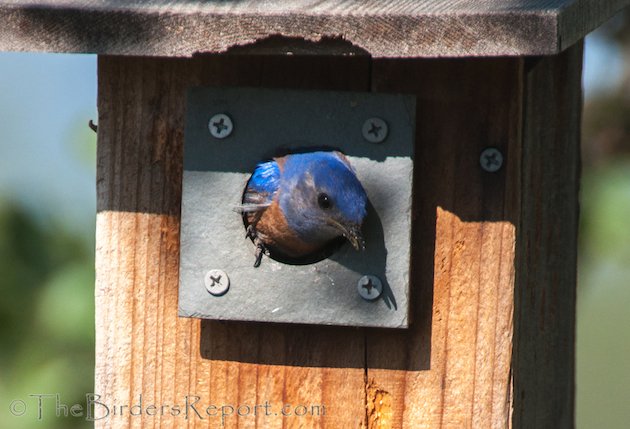
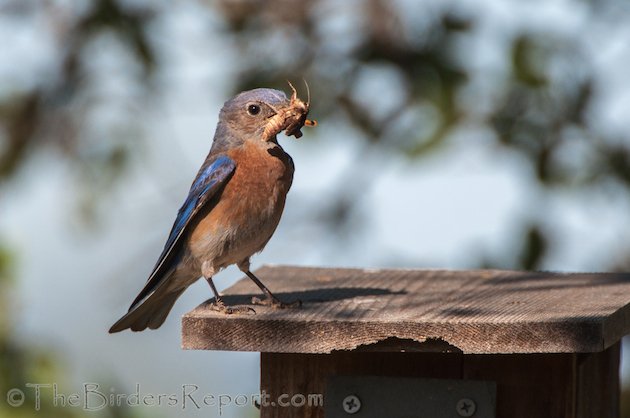
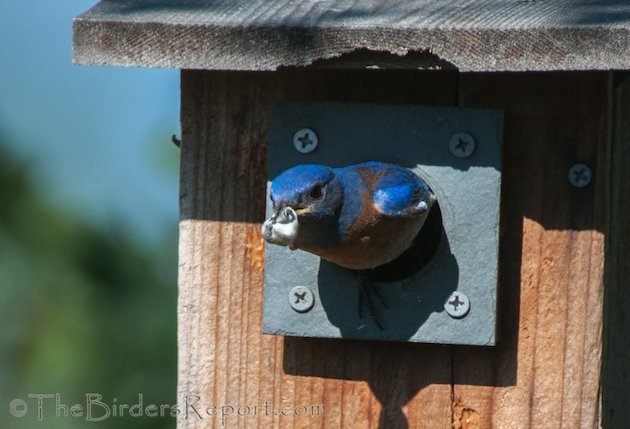











Hi Larry,
Thank you for this great post. I live in the SF bay area, have seen many bluebirds this year in the East Bay parks such as Briones and Pleasanton Ridge, but even yesterday saw a pair in a small urban park here Redwood City on the peninsula. Would love to come walk a “bluebird trail”. Your video footage was a great way to start this day!